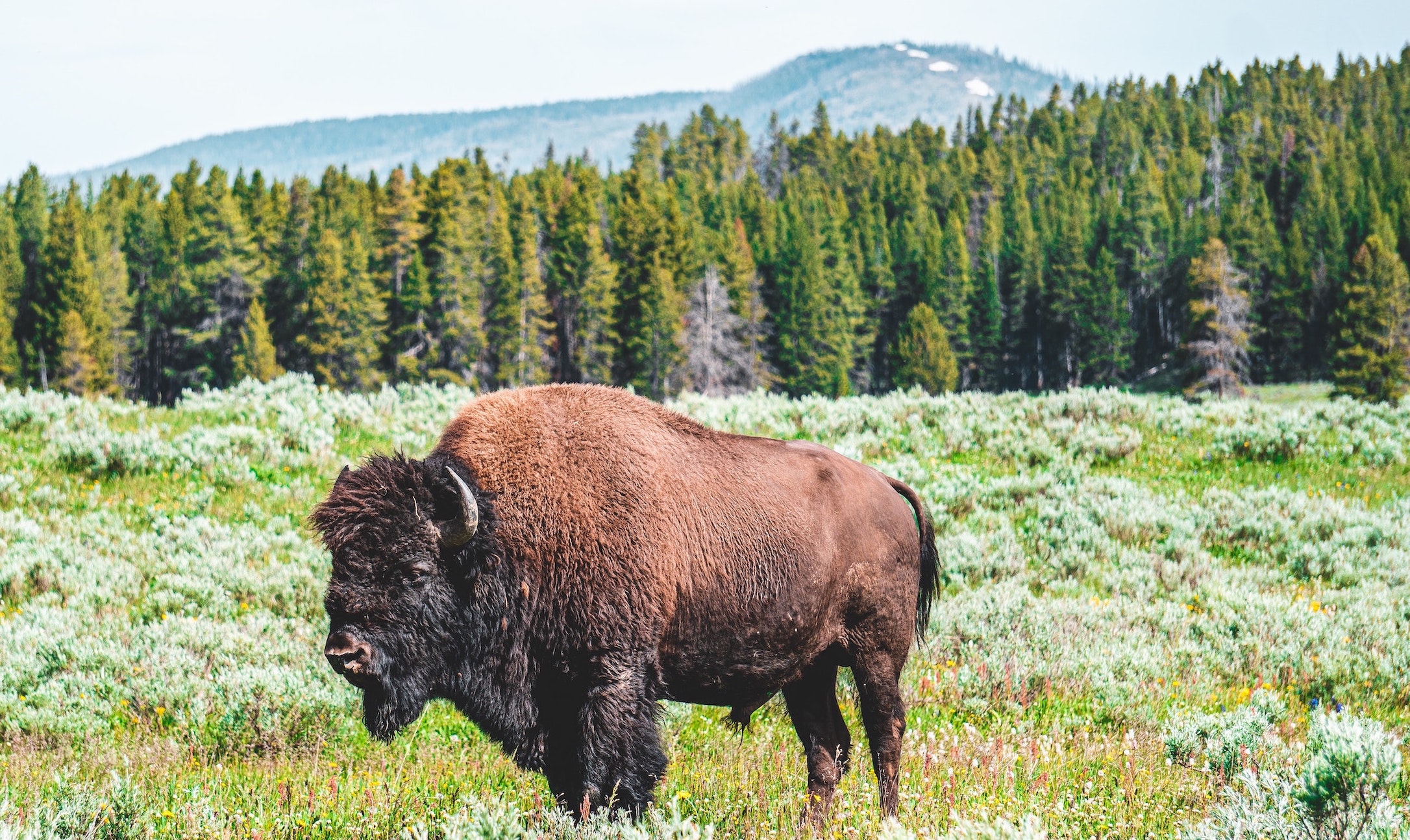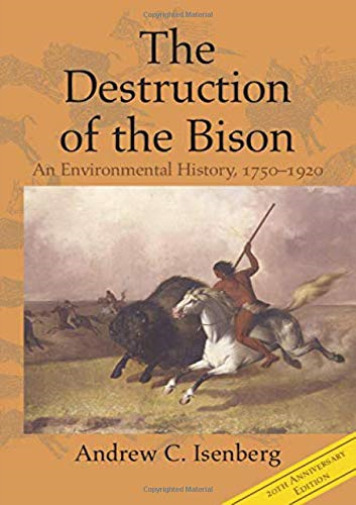Influential 'Destruction of the Bison' earns 20-year anniversary edition

LAWRENCE — During his first few months in office, President Barack Obama signed the National Bison Legacy Act, designating the bison as national mammal of the United States.
 “But it didn’t really do anything,” said Andrew Isenberg, Hall Distinguished Professor of American History at the University of Kansas.
“But it didn’t really do anything,” said Andrew Isenberg, Hall Distinguished Professor of American History at the University of Kansas.
“It’s greenwashing. It’s rare to find legislation that is very specific about not doing anything to actually protect the bison or prevent people from killing it.”
Such is the long, complicated and rather unhealthy relationship America has experienced with its national mammal. This history is revisited in a new 20-year anniversary edition of Isenberg’s signature book, “The Destruction of the Bison: An Environmental History, 1750-1920” (Cambridge University Press, 2020). An essential work in environmental history examining the cultural and ecological factors that overwhelmed the species, the book features a new foreword and afterward that extends his research into the 21st century.
 For many, the tacit understanding of the bison is that white Americans moved westward and slaughtered the species to near-extinction.
For many, the tacit understanding of the bison is that white Americans moved westward and slaughtered the species to near-extinction.
“There’s obviously a certain amount of truth to that,” said Isenberg, who is considered the world’s foremost authority on this subject.
“But one of the things that drew me to this project was the numbers didn’t add up. It was clear the bison’s decline was already happening before there were many white settlers or hide hunters in the Great Plains. Then you looked at the number of hide hunters who were there in the 1870s. How many days were they out there? How many bison could they have shot? Again, it just didn’t add up.”
Environmental factors and Native American hunters’ impact in the early 19th century also added to the decline.
Isenberg writes in the foreword, “‘The Destruction of the Bison’ showed the damage that a capitalist, colonizing society can do to the environment.”
Is there a modern equivalent of this type of damage?
“There are so many. But one example is the pipeline that will bring oil from Canada through grasslands that once had bison on them to consumers in the western capitalist world,” he said.
“In that, you can see capitalism’s demand for fossil fuels, which is ruinous. As has often happened, when there’s large-scale environmental change — whether we are getting rid of bison to replace it with cattle or shifting to an economy that is largely based around oil and coal — it’s not as if the burdens of that shift are felt equally by everybody. The burdens tend to fall on those who are poor, social outcasts and less well-connected. And you can see that in terms of where they’re putting the pipeline.”
He explained that what we now consider questions of contemporary environmental justice have always been part of environmental history. For instance, many people suffered because of the bison going extinct, but the brunt of it fell on Native Americans. Even the preservation of the species put an extra burden on Native Americans because every bison preserve was carved out of reservations, resulting in tribes giving up even more of their land.
Isenberg began researching this material as a doctoral student nearly three decades ago. While he corrected a few grammatical and terminology errors from the original version, he fought the urge to totally revamp the book. Instead, he sees it as a time capsule of his work.
Were Isenberg to rewrite it from scratch today, the professor does admit he might “push a couple arguments” further.
“I’d have more to say about gender in both native societies and white societies, and the way in which certain constructions of gender influenced the way people perceived the bison,” he said.
He points to a group called the American Bison Society that was created in 1905 to avert its namesake’s extinction. Its wealthy and powerful membership included Theodore Roosevelt. J.P. Morgan and Ernest Thompson Seton, founder of the Boy Scouts of America.
“They did some good things — they probably did prevent the animals from going extinct,” he said. “But they were very concerned with the state of masculinity in America at the turn of the century. Too much urbanization and cosmopolitanism was ‘making American men soft.’ They wanted to save the bison in order to provide a kind of nostalgic semblance of the frontier so individuals could go out and experience that.”
Despite his knowledge of the subject, Isenberg admits it doesn’t bother him when people confuse bison with buffalo.
“I’m past that,” he said, laughing.
Now in his third year at KU, Isenberg specializes in environmental history and the history of the American West. His other books include “The Republican Reversal: Conservatives and the Environment from Nixon to Trump” (with James Morton Turner), “The California Gold Rush: A Brief History with Documents” and “The Oxford Handbook of Environmental History.” He’s also appeared as an expert source in a number of documentaries, including National Geographic’s “America Before Columbus” and AMC’s “The American West.”
He said the last time he’s seen a bison in person was on a family trip last year to the Black Hills of South Dakota.
“An adult cow is 1,600 pounds. A bull can weigh a ton. They are literally as fast as racehorses in short stretches. Yet I’ve been in Yellowstone and seen people jump out of the car, grab their cameras and run toward them,” he said.
The author notes that when Yellowstone was created, herds of bison were artificially introduced into the area.
“This was essentially implying, ‘Now it’s natural,’” he said.
“It’s like putting the stamp on ‘wilderness,’ but it doesn’t really get at the underlying problems in our society’s relationship with nature and whether or not what we do is sustainable. It’s putting a fig leaf on a much bigger problem. For whatever reason, in American society, the bison has served as that fig leaf.”
Top photo: Pexels